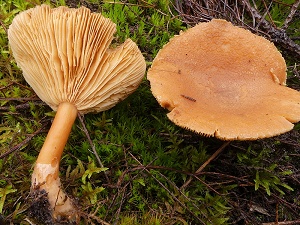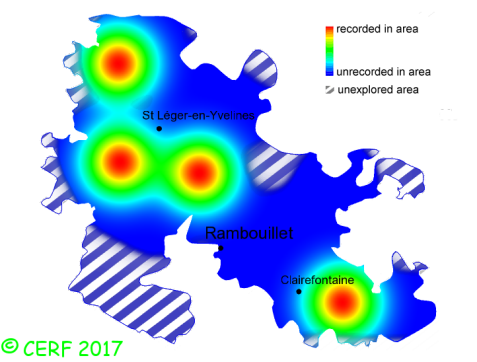| Lactarius helvus (Fr.:Fr.) Fr. |
|
|
|
|
|
|
The cap is reddish yellow to ochre grey. The cap surface is without concentric bands, not viscid nor sticky. The stem is ochre to cinnamon, without ring. The flesh is whitish to pale ochre or pinkish, turning slightly red when exposed to air (according to some authors); its taste is mild (liquorice); the odour is of celery, stock cubes or curry (when dry); its texture is grainy (breaking like a chalk stick), exuding when cut a watery and unchanging milk. The gills are adnate to decurrent, crowded . The spore print is white. This species is mycorrhizal. It grows in damp coniferous woods, peatlands, or amongst sphagnum, on a rather very acid soil, with fir, Douglas pine, birch. The fruiting period takes place from July to November.
Chemical tests : none. Distinctive features : grey-brown to ochre-orange cap; distinctive odour (celery or curry in fresh adults, chicory when dried); watery milk, unchanging, scarse Lactarius helvus is quite rare and localised in the forest of Rambouillet, and is occasional, more generally speaking . | ||
|
page updated on 14/01/18

